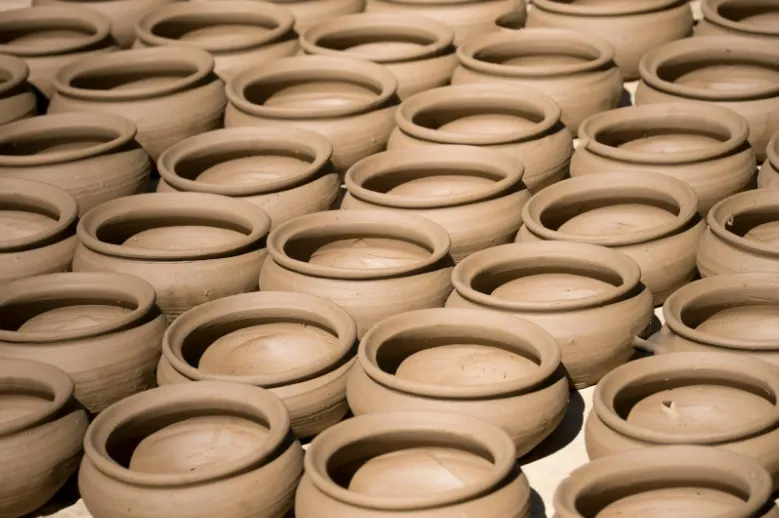
Ras Al Khaimah’s Artisan Pottery and Handicrafts
- Blog
-
Aug 29
- Share post

Many people visiting the UAE are drawn to its modern shopping malls and luxury boutiques, but there is a growing interest in something more authentic, specifically handmade crafts that carry the stories of local traditions.
Ras Al Khaimah, with its rich history and strong ties to traditional craftsmanship, offers visitors a closer look at these cultural treasures. From pottery shaped by skilled hands to woven goods that reflect generations of knowledge, the emirate’s artisans keep heritage alive while adapting to contemporary tastes.
Exploring these crafts offers insight into the skills, patience, and creativity that have been part of the region’s identity for centuries.
The Role of Craftsmanship in Ras Al Khaimah’s Culture
Artisan pottery and handicrafts are not just souvenirs; they are a living record of the emirate’s past. For centuries, these items served practical purposes, from storing food and water to providing tools for daily life. They were made using local materials, ensuring that each piece was both functional and sustainable.
In earlier times, pottery production relied on the clay found in the region’s wadis and coastal areas, while palm fronds, wool, and cotton formed the basis for weaving and textile crafts. Today, these same traditions continue, although some artisans incorporate modern tools or designs to appeal to a wider market.
Traditional Pottery of Ras Al Khaimah
Ras Al Khaimah has a long-standing pottery tradition, with archaeological sites revealing ceramic vessels dating back thousands of years. These pieces were often used for storing water, cooking, or fermenting food. The shapes, sizes, and decorations varied depending on the purpose and the artisan’s style.
Modern pottery workshops in the emirate still follow many of these traditional methods. Clay is shaped by hand or on a simple wheel, then fired in kilns that mimic historical designs. Some artisans create unglazed pieces for their natural, rustic look, while others use minimal glazing to enhance durability without losing authenticity.
Pottery is often sold at local markets, heritage centers, and specialized workshops. Visitors can watch the process from start to finish, gaining an appreciation for the craftsmanship and time involved in creating each piece.
Weaving and Palm Frond Crafts
Palm fronds have been a vital resource in the UAE for centuries, and Ras Al Khaimah’s artisans have mastered the skill of weaving them into everyday items. Known locally as safeefah, this craft involves splitting and drying the fronds before weaving them into mats, baskets, and decorative items.
These items were once household necessities, used for storing food, protecting floors, and even as coverings for simple shelters. Today, palm frond weaving remains an important tradition, with artisans producing both functional goods and decorative pieces that blend traditional techniques with modern patterns and colors.
Textile and Embroidery Work
Textile production in Ras Al Khaimah includes weaving fabrics on handlooms and embellishing them with intricate embroidery. Traditional garments often feature fine stitching and patterns unique to the region. Embroidery techniques are passed down through generations, and the motifs often hold cultural or symbolic meaning.
While synthetic fabrics have replaced some traditional materials, many artisans still prefer natural cotton or wool for their durability and authenticity. In some cases, these crafts have evolved into fashion items such as scarves, bags, and decorative wall hangings, attracting both local and international buyers.
Metalwork and Decorative Arts
Alongside pottery and textiles, Ras Al Khaimah is also home to skilled metalworkers who produce traditional coffee pots, lanterns, and decorative trays. Brass and copper are common materials, shaped and engraved using methods that have changed little over time. These pieces often feature geometric patterns and motifs inspired by Islamic art.
Metalwork, while functional, is also deeply tied to social traditions. Coffee pots, for example, are a central part of Emirati hospitality, and many households still use handcrafted versions during special gatherings.
Learning from the Artisans
For visitors, one of the most rewarding aspects of exploring Ras Al Khaimah’s artisan scene is the opportunity to meet the craftspeople themselves. Many workshops welcome guests, offering demonstrations and short classes where participants can try their hand at pottery shaping, weaving, or embroidery.
These experiences not only provide insight into the techniques but also help sustain the crafts by creating new appreciation and demand. By purchasing directly from artisans, visitors ensure that their contributions go straight to the people keeping these traditions alive.
Markets and Cultural Centers
Local markets and cultural centers play a key role in promoting artisan crafts. The Ras Al Khaimah National Museum often features displays of traditional pottery, textiles, and tools, placing them within their historical context. Heritage villages and craft fairs offer live demonstrations, giving visitors a more interactive experience.
Souks remain popular spots for purchasing handicrafts, with vendors selling everything from hand-painted ceramics to woven baskets. These marketplaces offer a chance to compare styles, learn about different materials, and discover unique pieces not found in larger commercial outlets.
Preserving Craft Traditions in Modern Times
While the demand for traditional crafts has grown among tourists and collectors, mass production and changing lifestyles have threatened the survival of some skills. In response, local initiatives and heritage programs work to document techniques, train younger generations, and provide platforms for artisans to sell their work.
Some artisans adapt their designs for modern use, producing tableware, home décor, or fashion accessories, without losing the authenticity of their craft. This balance between tradition and innovation helps ensure that the skills remain relevant and economically viable.
Conclusion
Ras Al Khaimah’s artisan pottery and handicrafts represent a bridge between the emirate’s past and present. Each handmade piece reflects centuries of knowledge, resourcefulness, and creativity, offering both beauty and a tangible link to local heritage.
Guide UAE brings together the best of what the country has to offer, from cultural heritage experiences to dining, shopping, and entertainment. Visit GuideUAE.ae to explore trusted local businesses and experiences across the UAE, all in one place.